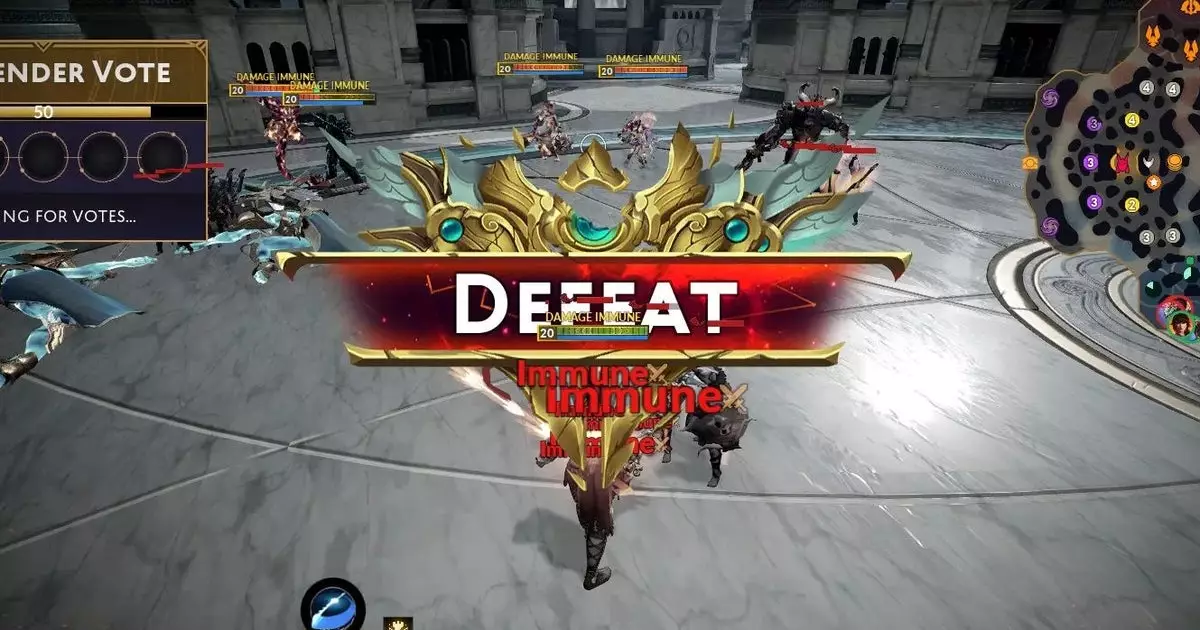In a troubling development, Hi-Rez Studios has recently announced layoffs just one month following the launch of their highly anticipated title, Smite 2, which entered the gaming world as a free-to-play beta. Initial reports suggest that between 20 to 30 employees have been let go, with other estimates indicating that the scale could be even broader—potentially affecting 50 to 60 staff members across various disciplines. This decision raises significant questions about the studio’s long-term viability and the future of its game portfolio.
The immediate repercussions of these layoffs are stark: three established games—Smite, Paladins, and Rogue Company—will no longer receive updates. The cessation of development support for these games prevents any potential evolution or enhancement, thus potentially alienating their player bases. Despite management’s assurances that these games remain playable, the absence of new content effectively consigns them to a stagnation that could diminish player engagement over time.
It is essential to recognize that this alarming trend is not an isolated incident. Hi-Rez has undergone multiple rounds of layoffs in a short span, thereby highlighting ongoing challenges within the studio. Recently, CEO Stewart Chisam faced backlash on social media platforms, resulting in him deleting his account post-announcement. Such actions reflect the precarious state in which even upper management finds itself, wrestling with public perception while grappling with internal realities.
According to the studio’s Discord communication, Hi-Rez is pivoting its focus primarily towards the development of Smite 2, hoping that a “streamlined operation” will herald an era of sustainability—seemingly at the expense of their other titles. The rhetoric of sustainability, while perhaps intended to inspire confidence, calls into question the studio’s capacity to maintain a diverse product lineup. The business decision to go all-in on Smite 2 suggests a risky gamble in a market already marred by turbulence.
It raises important questions: Is a singular focus on one game truly sustainable in an industry where diversified portfolios often outperform? Moreover, is the market even poised to embrace Smite 2 as a leader in the MOBA genre, particularly when competitor titles are gaining traction?
The layoffs at Hi-Rez are emblematic of a more extensive crisis affecting the gaming industry, which has seen a troubling upswing in job cuts across various key players. As companies grapple with rising development costs, shifting consumer preferences, and waning revenues, many have been forced into tough decisions. Workers across the industry are often left feeling precarious, living under the shadow of corporate restructuring, and the fate of their passion projects uncertain.
This environment fosters a culture of uncertainty, which can discourage innovation—an essential ingredient for success in the ever-evolving gaming landscape. As studios shed talent, they may inadvertently stifle creativity and the very skills necessary to propel their best titles forward.
Looking ahead, Hi-Rez’s path remains unclear. While Smite 2 may attract initial players, the studio must quickly demonstrate its ability to sustain meaningful updates and a captivating gaming environment. Neglecting their storied titles seems to suggest not just a lack of resources but possibly a misguided approach to engaging loyal player communities.
As the industry continues to recalibrate, the survival of Hi-Rez and many similar companies may depend on their ability to reconcile ambitious projects with market realities, ensuring both player satisfaction and team morale. For fans of their games, the coming months will be critical in determining whether Hi-Rez can not only endure this challenging chapter but emerge as a revitalized force in gaming. Without a significant turnaround in both audience reception and internal structure, the studio might find itself struggling to maintain its place in a competitive landscape.


Leave a Reply
You must be logged in to post a comment.